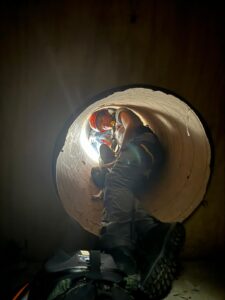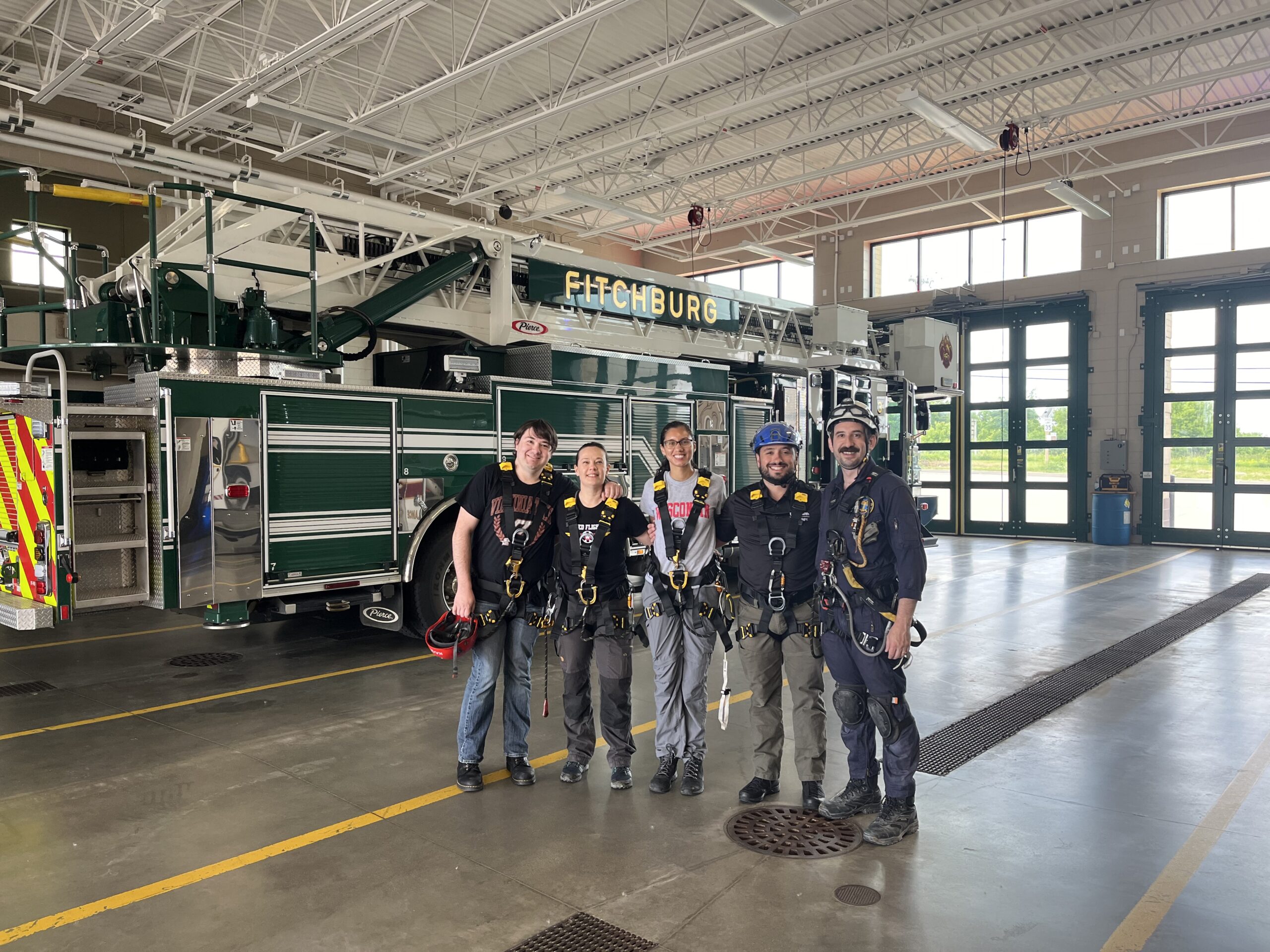When physicians are called into the field, they are likely to encounter medically complex patients in austere and unfamiliar conditions. To operate safely and effectively, physicians involved in field response should have a fundamental understanding of rescue operations and the threats facing rescuers and victims.
Elevated Safety recently teamed up with the University of Wisconsin-Madison’s School of Medicine and Public Health to provide foundational knowledge on technical rescue operations to emergency medicine physicians completing fellowships in Emergency Medical Services (EMS) or Retrieval & Critical Care Transport. The one-day “Introduction to Technical Rescue” course provided awareness-level training through a combination of lectures, demonstrations, and interactive scenarios.
Didactics and Demonstrations
 The day began with didactic instruction on rescue operations and medical considerations for high-angle, confined space, trench, and structural collapse incidents. “The purpose of enacting these rescues is not simply to retrieve bodies, but to improve the odds that victims will survive and return to a normal, premorbid level of function,” says Dr. Michael Spigner, a UW EMS physician and co-instructor of the course. “We know that there are a subset of patients with medical illness or traumatic injury whose early deaths may be preventable through early access and stabilization.”
The day began with didactic instruction on rescue operations and medical considerations for high-angle, confined space, trench, and structural collapse incidents. “The purpose of enacting these rescues is not simply to retrieve bodies, but to improve the odds that victims will survive and return to a normal, premorbid level of function,” says Dr. Michael Spigner, a UW EMS physician and co-instructor of the course. “We know that there are a subset of patients with medical illness or traumatic injury whose early deaths may be preventable through early access and stabilization.”
After completing the lecture component, the class discussed proper selection and fitting of PPE, the basics of fall restraint and arrest systems, air monitoring systems, and confined space permitting.
Interactive Scenarios
 The highlight of the day was a pair of hands-on scenarios. The scenarios were designed to achieve two objectives. The first objective was to allow physicians to safely experience the responsibilities and stressors of rescuers. “Experiencing the role of a rescuer is important so that the physicians can appreciate the importance of incident rehabilitation, and so that they can also understand that intensive treatment-in-place is not always realistic,” says Dr. Spigner. The second objective was to practice the direct care of patients in austere conditions.
The highlight of the day was a pair of hands-on scenarios. The scenarios were designed to achieve two objectives. The first objective was to allow physicians to safely experience the responsibilities and stressors of rescuers. “Experiencing the role of a rescuer is important so that the physicians can appreciate the importance of incident rehabilitation, and so that they can also understand that intensive treatment-in-place is not always realistic,” says Dr. Spigner. The second objective was to practice the direct care of patients in austere conditions.
The class reviewed two pre-rigged rope rescue systems. The first system, designed for confined space rescue, featured the Arizona Vortex by CMC, Harken Wingman, and a Petzl ASAP. The second system, designed for high-angle rescue, was designed using a twin tension system with CMC Clutches by Harken. During the scenarios, participants were given hands-on instruction on the operation of the devices, and took particular note of the intuitive and user-friendly nature of the Harken products. Under the supervision of Elevated Safety instructors, students then operated the systems while enacting the simulated rescues.
Debriefing
 During the debrief, all participants rated the training as extremely useful for their overall education. Of note, they reported much higher confidence in being able to safely respond to technical rescue incidents.
During the debrief, all participants rated the training as extremely useful for their overall education. Of note, they reported much higher confidence in being able to safely respond to technical rescue incidents.
Elevated Safety and Harken Safety & Rescue greatly value the opportunity to collaborate with the University of Wisconsin-Madison’s School of Medicine and Public Health to educate the next generation of prehospital physicians. The dedication and skill of the participating physicians was outstanding and we look forward to working with future EMS and Retrieval & Critical Care Transport fellows.
